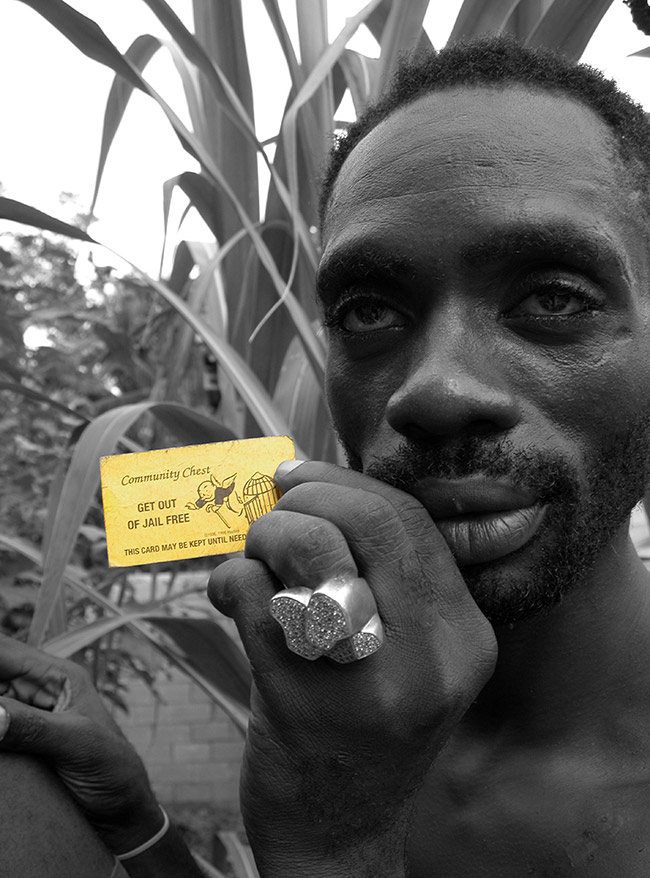The Ultimate Lee ‘Scratch’ Perry Guide
The recorded output of reggae shaman Lee ‘Scratch’ Perry forms something of a bottomless pit, a never-ending well of individual sounds that all bear his unorthodox hallmarks. As he’s been recording for over 50 years, there are several distinct phases to contend with, beginning with early ska work at Studio One – where he was chiefly employed as a vocalist – and the subsequent apprenticeship stages that led to him becoming an independent producer in his own right with the formation of the Upsetter label in late 1968.
Perry had his first significant hits shortly thereafter, in the fast-paced early reggae style (AKA “skinhead reggae”), but really came into his own during the roots era of the mid-to-late ’70s, when the establishment of his Black Ark studio allowed for unfettered musical creativity, especially in the evolving dub format. Then, after Perry underwent a dramatic personal metamorphosis, the post-Ark period has several distinct sub-phases itself, as a wandering Perry fostered significant partnerships abroad with expatriate Jamaicans such as Melvin “Munchie” Jackson and Lloyd “Bullwackie” Barnes, as well as non-Jamaican producers such as Adrian Sherwood, Mad Professor, and numerous others.
Diehard reggae purists often deride anything Perry recorded away from the Black Ark, and it is certainly the case that the Quality Control button was missing on some later works. However, the post-Ark catalogue has plenty of interest for the discerning listener, as well as younger fans less versed with the man’s voluminous archive.
Since retrospective compilations are too numerous to mention, the following discography focuses almost entirely on original albums crediting Perry or his Upsetters band, explored in roughly chronological order; it only mentions in passing the single-artist albums Perry produced with singers, vocal groups and deejays, many of which are worth seeking out on their own.
About half of the recordings Perry made in the ska years are collected on CHICKEN SCRATCH, when he was trying to make it as a singer, rather than a music producer. This humorous material is full of folk references, and marked by Perry’s country twang; “By Saint Peter” and “Tackoo” sound especially rural, and the harmonic backing from the Soulettes and the Wailers underscore the closeness of the parties at the time.
After Perry left Studio One in 1966, he worked at West Indies Records Limited and made short-lived partnerships with Prince Buster, Joe Gibbs, Clancy Eccles and Linford “Andy Capp” Anderson, before finally striking out on his own in 1968. The following year, thanks in part to overseas licensing deals brokered with the Trojan and Pama companies in London, a slew of Perry-produced albums surfaced, the first being a monophonic Trojan set called THE UPSETTER, released when his organ-led instrumentals like “Man from MI5” were impacting the UK pop charts; aside from three reggae adaptations of pop and soul hits (like the Bee Gees’ “To Love Somebody”), the organ is fully in command here, which gives the material an instant hook.
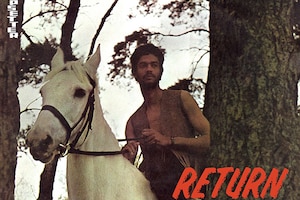
The fully instrumental RETURN OF DJANGO was swiftly assembled by Trojan after the title track, a saxophone re-working of Fats Domino’s “Sick and Tired,” reached the top ten in the UK; hot organ numbers like “Cold Sweat,” “Night Doctor,” “Soulful I” and “Medical Operation” make it the strongest representation of Perry’s late ’60s productions.
That same year, CLINT EASTWOOD (AKA Best Of Lee Perry And The Upsetters Vol 1) was compiled for the rival Pama label when the title track – a sparse, guitar-led instrumental reworking of the Coasters’ “Yakkety Yak” – impacted in Britain. That said, this collection had a lot of vocal work, including the Reggae Boys’ “Selassie” and “What Is This,” and Niney the Observer’s uncredited version of Eddie Floyd’s “I’ve Never Found a Girl,” as well as U Roy’s “Righteous Ruler” (miscredited as “Nighfall Ruler”), a percussive niyabighi chant featuring Peter Tosh and Count Ossie.
You can already hear Perry’s propensity for an atypical, off-the-wall approach.
1970’s MANY MOODS OF THE UPSETTERS (AKA Best Of Lee Perry And The Upsetters Vol 2) was another mostly instrumental set, with Carl Dawkins’ take of the Temptations’ “Cloud Nine” and Pat Satchmo’s “Goosy” and “Boss Society” the exceptions. Listen to the organ-and-sax romp of “Serious Joke” and a steel pan version of Joe South’s “Games People Play,” and you can already hear Perry’s propensity for an atypical, off-the-wall approach.
Trojan’s SCRATCH THE UPSETTER AGAIN continues in the same vein, with the organ in prime position (and with a couple of cheesy vocal covers thrown in), though the rhythms on it are significantly slower; “Bad Tooth,” “The Denstist” (sic) and “Soul Walk” are certainly a lot less frantic than the tracks released in ’69.
At this point, the bulk of Perry’s productions had featured the All Stars, a group of hit-making session musicians centred on bassist Jackie Jackson, drummer Hugh Malcolm, guitarist Hux Brown and organist Winston Wright, but when Perry travelled to the UK with his Upsetters band in late 1969 to appear on Top of the Pops, he wound up taking a younger set of musicians he’d recently begun using, namely bassist Aston “Family Man” Barrett, his drumming brother Carlton, guitarist Alva “Reggie” Lewis, and organist Glen “Capo” Adams. After a brisk set of tour dates in Britain and Holland, the band got stranded in London when Perry had other business to attend to overseas; THE GOOD, THE BAD AND THE UPSETTERS, issued in the UK by Trojan, was a lacklustre set that had nothing to do with Perry, since it was produced in London by former Trojan staffers Bruce White and Tony Cousins, and its existence so infuriated Perry that he later issued an album of the same name in Jamaica, this time with the usual blend of organ, saxophone and steel pan instrumentals, including some bass-heavy Wailers dubs.
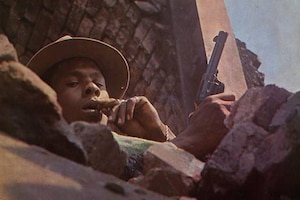
Trojan’s EASTWOOD RIDES AGAIN saw the Barrett brothers in full effect. Songs like “Pop Corn” and “Catch This” are stripped-down, super-raw funk jams, heavily inspired by James Brown. Unfortunately, older material like “Dollar in the Teeth” and Sir Lord Comic’s “Django” rendered the set somewhat uneven.
After cutting the excellent Soul Rebels with the Wailers, and the less-crucial Prisoner of Love with Dave Barker (which was not completed properly, prior to Barker’s migration to Britain), the Wailers’ sophomore Upsetter set, Soul Revolution, was even better than their debut, containing era-defining songs such as “Keep On Moving,” “Kaya,” “African Herbsman,” “Don’t Rock My Boat” and “Sun Is Shining”; SOUL REVOLUTION PART 2 (AKA Upsetter Revolution Rhythm) re-configures this material as minimal instrumentals, allowing us to hear the material in a totally different way.
AFRICA’S BLOOD again mixed instrumentals with vocal tracks, but now with cultural signifiers pointing towards a growing Afrocentrism: “Place Called Africa Version 3” was Dr Alimantado’s deejay cut of Junior Byles’ hymn to the Motherland, and “Well Dread Version 3” was a niyabinghi re-casting of Eric Donaldson’s “Cherry Oh Baby” by the otherwise unknown Addis Ababa Children. In contrast, Dave Barker’s “Do Your Thing” was pure funk, and the Hurricanes/Righteous Flames’ “Isn’t It Wrong” was a broken-hearted ballad. In other words, the album is a typical early ’70s Upsetter mixed bag.
A strange mix of rough and smooth, conscious and cheesy, Perry and non-Perry, but all good.
BATTLE AXE stuck to a similar formula, this time mixing a super-schmaltzy organ take of Tony Orlando’s “Knock Three Times” with Little Roy’s “Cross the Nation” and Carl Dawkins’ version of Freddy McKay’s “Picture On the Wall,” though for some reason, the album is filled out with Delroy Wilson’s “Cool Operator” (produced by Bunny Lee), and Andy Capp’s early deejay epic, “Pop a Top” (produced by Andy himself). Thus, a strange mix of rough and smooth, conscious and cheesy, Perry and non-Perry, but all good.
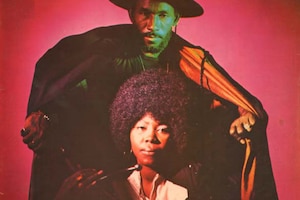
1973’s CLOAK AND DAGGER showed Perry edging ever closer to dub. The album appeared in two different editions: the British issue on Rhino was entirely instrumental, while the Jamaican issue skated the fine line between the instrumental and full-blown dub, since it included proper dubs of “Iron Gate” and “Rude Walking,” the latter an adaptation of Horace Andy’s “Skylarking”; the Jamaican issue went a step further by using the instrumental cut of the rhythm for an aural round of table tennis, another Upsetter joke manifested in sound. “Cave Man Skank,” which appears on both editions, is also noteworthy: its opening section has a Native American reading portions of the Bible in Cherokee.
In contrast, the RHYTHM SHOWER album (initially issued only in Jamaica) mixed toasts by Dillinger and Sir Lord Comic with dubbed-out cuts of recent Upsetter experiments, with “Double Power” being a swirling organ cut of the Stingers’ “Give Me Power.” There was also a fearsome, bass-oriented cut of the Gatherers’ “Words of My Mouth” called “Kuchy Skank,” as well as “Lover Version,” a dub cut of George Faith’s first adaptation of William Bell’s “I Forgot to Be Your Lover.”
A true classic of the dub genre, this album is absolutely essential.
Late 1973 saw the release of one of the greatest Lee Perry productions ever: UPSETTERS 14 DUB BLACKBOARD JUNGLE, the album better known as Blackboard Jungle Dub. The first fully-fledged Lee “Scratch” Perry dub album, and one of a handful of records vying for the title of “First Dub LP,” the album was initially issued in small quantities in Jamaica on the Upsetter label as a 14-song album mixed with channel separation, like an Esquivel record, with the drum and bass largely in the left speaker, and the guitar and horns in the right; later editions were reduced to 12 songs, and often issued with a monophonic mix (check the Auralux edition for the definitive reissue).
Some say King Tubby collaborated with Perry on the release, though Perry has often downplayed or denied Tubby’s involvement. In any case, opening number “Black Panta,” an awesome dub of “Bucky Skank,” had sense-surround drums, roaring sirens and wild guitar licks; “Kasha Macka” re-worked Prince Django’s “Hot Tip” within a stop-and-go mixing format; “You Can Run” was re-cast in drum-and-bass mode as “Elephant Rock,” and there are dubs of Junior Byles’ “Place Called Africa,” and the Wailers’ “Kaya,” “Dreamland” and “Keep On Moving.” A true classic of the dub genre, this album is absolutely essential.
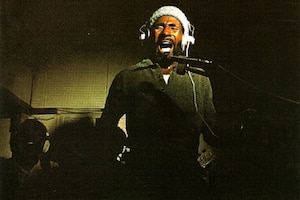
The Silvertones’ uneven Silver Bullets was one of the first albums to surface from the newly built Black Ark, the home studio Perry constructed in the front garden of his suburban Kingston home in late 1973; most of the album was voiced at King Tubby’s, since Perry’s studio was not yet fully equipped for voice recording. Having a studio of his own brought all kinds of artistic freedom, which would bear greater fruit as time progressed, but in its early days the tiny studio had only the most rudimentary of equipment, its main item being a Teac 4-track, powered by a Marantz home stereo amplifier, and a very basic Alice mixing desk, designed for radio stations (purchased in London for £35), along with a Grampian spring reverb and an Echoplex tape delay. It all rendered his output distinctly lo-fi, especially when compared to the work he’d been cutting at Dynamics, which was then the best-equipped recording facility in the entire Caribbean region.
Perry’s ode to KFC comes complete with frying chicken sounds, spliced between winding tapes, a ghostly trumpet, and futuristic Moog synthesizer.
For reference, check DOUBLE SEVEN, which was largely crafted at Dynamics before the Black Ark was fully up and running. The album opened with the eerie “Kentucky Skank,” Perry’s ode to KFC, complete with frying chicken sounds, spliced between winding tapes, a ghostly trumpet, and futuristic Moog synthesizer (courtesy of Ken Elliott at London’s Chalk Farm). U Roy’s “Double Six” and I Roy’s “High Fashion” and “Hail Stones” showed just how strong Perry’s deejay material had become, while versions of the Chi-Lites’ “We Are Neighbours,” Sam And Dave’s “Soul Man,” and a re-working of Al Green’s “Love and Happiness” as “Jungle Lion,” all betrayed the funky soul influence that was increasingly shaping his material. The audio spectrum on this album is fully differentiated and spatial placement an important component, something it would take years for Perry to achieve at the Black Ark.
Just as the Black Ark became operational, Perry found his regular overseas outlets drying up, so he began brokering new overseas distribution deals with a number of independent labels, the most significant of which was with DIP, a reggae concern founded by Jamaican immigrant Dennis Harris in southeast London. In 1975, the company issued a quartet of abstract Black Ark albums, made with the Alice board; featured musicians include keyboardists Earl “Wire” Lindo and Ansel Collins, guitarist/bassist Radcliffe “Douggie” Bryan, and members of the Now Generation band. DIP PRESENTS THE UPSETTER had Watty “King” Burnett’s “I Man Free,” Linval Thompson’s “Kung Fu Man” (miscredited to Linval Spencer), the Silvertones’ suggestive “Dub a Pum Pum,” and the Gladiators’ “Time,” along with some Gaylads tracks and songs by the lesser-known Sam Carty; there are also a few oddball instrumentals, including a guitar cut of Bread’s “Everything I Own” (as “Jamaican Theme”), and the Upsetters’ dub-influenced “Enter The Dragon,” based on the Chi-Lites’ “Lady Lady.”
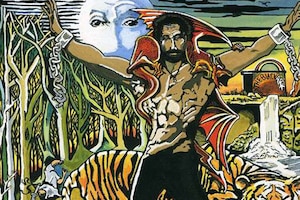
RETURN OF WAX was further in instru-dub territory with cuts of Junior Byles’ “Curley Locks” (as “Samurai Swordsman”) and Michael Rose’s “Observe Life” (as “Final Weapon”), while “Kung Fu Warrior” was loosely based on the Heptones’ “Drifting Away.” The dub of Delroy Denton’s “Different Experience,” here titled “One Armed Boxer,” has a series of false endings, which was Perry’s latest mixing fixation, and other rhythms are largely void of reference points.
KUNG FU MEETS THE DRAGON was a little less abstract, edging towards the instrumental side of dub; aside from a quasi-dub of “Kung Fu Man” and a peculiar re-cut of Roy Shirley’s “Hold Them” featuring an over-phased harmonica (as “Hold Them Kung Fu”), the album again had few recognisable reference points, but is generally marked by far more melody: “Theme from Hong Kong” and “Scorching Iron” were led by a bright melodica; “Fungaa,” “Black Belt Jones” and “Iron Fist” had harsh synthesizer overdubs, while “Skango” made use of a full horn section, led by a swinging sax. The extremities were “Heart of the Dragon” and “Flames of the Dragon,” both manic attempts to musically interpret the visual imagery of kung fu films, their frightful atmospheres demonstrating Perry’s relentless urge to experiment. The other DIP Upsetter album release, initially issued in tiny quantities, was Musical Bones, an instrumental showcase for trombonist Vin Gordon.
Revolution Dub saw Perry venturing further into the dub stratosphere, this time incorporating snippets of television sitcom dialogue on much of the disc.
After recording the To Love Somebody album with future Third World lead singer Bunny Rugs (renamed Bunny Scott by Perry for the occasion), the final Lee Perry-produced album to surface in 1975 was one of the best: REVOLUTION DUB, issued on Cactus in Britain, saw Perry venturing further into the dub stratosphere, this time incorporating snippets of television sitcom dialogue on much of the disc, and singing over many of the rhythms himself. There was also drastic cross-channel stereo panning, and fragmented vocal snippets that were frozen in time, leaping out at the listener.
Such techniques emphasized the potentially menacing qualities lying beneath a seemingly innocuous rhythm, such as Jimmy Riley’s “Woman’s Gotta Have It,” with by far the most frightening transformation involving Bunny Rugs’ “Move Out of My Way,” which here takes the unlikely form of “Kojak,” a mutant dub peppered by wild shouts from Perry, as he assumes the role of the lollipop-loving TV detective. The title track has Perry murmuring and grunting over an early experiment with the ghostly electronic pluses of his Conn Rhythm Box, and there’s a great pseudo-dub of Bunny and Ricky’s “Bushweed Corntrash,” with Perry humming over the top of it; “Dub the Rhythm,” a slow and ghostly dub re-cut of Clancy Eccles’ “Feel the Rhythm,” was punctuated by Perry’s belching, transforming the rhythm into a celebration of dub indigestion. It all makes Revolution Dub another appealing dub oddity of the period, lying somewhere between the extremities of dub and the ordinary vocal.
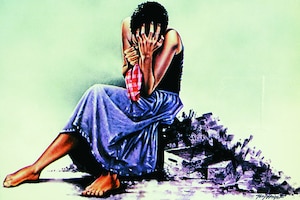
In 1975, the overseas success of Susan Cadogan’s “Hurt So Good” allowed Perry to seriously upgrade his studio (though DIP got the lion’s share of the proceeds when the song entered the pop charts). The installation of a Soundcraft mixing desk allowed for greater spatial capabilities, and when Perry found a demonstration model of a Mutron Super Phasing effects unit, that and a Roland Space Echo put his productions in a whole different league. His latest set of Upsetters now revolved around the highly-talented bassist Boris Gardiner and drummer Mikey “Boo” Richards of the Now Generation, augmented by various keyboardists, including Robbie Lyn and Keith Sterling, and guitarists such as Earl “Chinna” Smith and Robert “Billy” Johnson, with Perry himself providing a lot of the percussive accents, along with Scully and Sticky.
The final piece in the puzzle was the deal he brokered with Chris Blackwell that would see his output released through Island Records in the UK and USA, bringing his creations to a whole new sphere. Jah Lion’s Colombia Colly was thus able to reach a significantly greater audience than Prince Jazzbo’s Perry-produced album, which was handled by the smaller Black Wax in the UK (as Natty Passing Through), and Clocktower in the US (as Ital Corner). But the one to make a far greater impact was Max Romeo & The Upsetters’ WAR INA BABYLON, with its focus on the political factionalism that was then ruining Jamaica, bolstered by songs of more general social commentary, such as “Stealin” and “Uptown Babies” (though most listeners know the album now for “Chase the Devil,” which became a belated anthem for reggae and techno heads alike, following its 1992 adaptation by the Prodigy as “Out Of Space”).
Perry’s Super Ape is one of his outstanding masterworks.
Perry’s own SUPER APE is one of his outstanding masterworks. A veritable tour-de-force of Upsetter wizardry, about half of the cuts are raw dubs presented in their purest form, the remainder being near-standard vocals or re-voiced dub tracks with serious jazz leanings. The Heptones are in fine vocal form on “Three in One” and the opening “Zion’s Blood” (which re-works Devon Irons’ “When Jah Come”), and Prince Jazzbo imparts wisdom on “Croaking Lizard” (over Max Romeo’s “Chase the Devil”), while Perry leads the way on the flute-laden “Curly Dub.” From start to finish, the album is all killer, no filler.
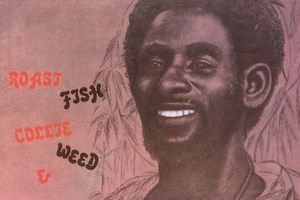
1977 saw the Heptones’ Party Time, Junior Murvin’s Police and Thieves and George Faith’s To Be a Lover all issued by Island to critical acclaim. However, the Congos’ landmark Heart of the Congos was shelved, and the company also passed on an album Perry produced with two Congolese singers, Seke Molenga and Kalo Kawongolo. Island also refused to issue Perry’s ROAST FISH COLLIE WEED & CORNBREAD and RETURN OF THE SUPER APE, both issued in Jamaica by Perry. Roast Fish is thoroughly excellent, being the first album ever issued to feature Lee Perry as lead vocalist on every number; songs like “Favourite Dish,” “Throw Some Water In” and the title track are couched in the particular humour and distinctive use of language that has always marked his best work. Musically, it bears a typical late Black Ark sound, bolstered by harmonies from the female Full Experience trio. However, “Evil Tongues,” which Perry later said was aimed at the Congos, evidences the man’s increasingly troubled frame of mind, verging on the paranoiac. Return of the Super Ape is far more abstract, with songs like “Bird In Hand,” “Crab Yars” and the title track being out-there instrumentals, while “Psyche & Trim,” “Huzza a Haha” and “High Ranking Sammy” probably made sense to Perry, but are largely impenetrable to the casual listener.
He covered the walls with cryptic graffiti, and filled his days with enacting obscure rituals, as a dramatic new persona, Pipecock Jackxon, took over.
By the end of 1978, as various pressures came to a head, Lee Perry shut the doors of the Black Ark, ejecting everyone from the premises, and trashing much of the equipment. He entered a new phase, based on covering the walls and every other available surface with cryptic graffiti, and filled his days with enacting obscure rituals, as a dramatic new persona, Pipecock Jackxon, took over. The following year, Island issued SCRATCH ON THE WIRE, which had some of the rejected Roast Fish tracks, along with songs by Max Romeo, George Faith, Jah Lion, and Perry himself, along with the Meditations’ great “No Peace,” Augustus Pablo’s intense “Vibrate On,” and a couple of songs by Errol Walker. It gave an inkling of what could have been, if Island had not rejected his later album works, but ultimately emphasised Perry’s absence.
Perry trashed the space and threw most of the new gear into his septic tank.
In late 1979, American expatriates based in Holland made contact with Perry to license back catalogue material for their Black Star Liner label. A new album was mooted and an overseas tour planned, leading to sessions being initiated at the dilapidated Black Ark with guitarist Dwight Pinkney of the Roots Radics, drummer Cornell Marshall of Zap Pow, keyboardist Tony Jonhson of the In Crowd, and bassist Don Grant. Towards the end of the year, Black Star Liner brought Perry to Holland, and further sessions were cut at a studio in Vuren with various European players, including guitarist GT Moore and saxophonist Bud Beadle, who had played in Geno Washington’s Ram Jam band, as well as Jocelyn Beroard, who would later be active in the zouk group Kassav. These players worked on further sessions at the decaying Ark in early 1980, but progress was slow. Then, the Black Star Liner crew painstakingly set about rebuilding the Ark to Perry’s specifications, even crafting a wooden drum booth with a duck pond beneath it, but when everything was installed and the equipment failed to work properly, Perry trashed the space and threw most of the new gear into his septic tank.
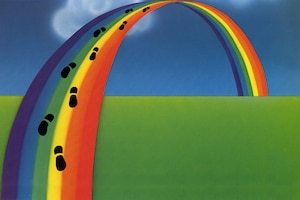
Since the tour was abandoned and the album left unfinished, the resultant RETURN OF PIPECOCK JACKXON may not be as Perry envisioned, but is still mightily compelling. Of the new material, “Give Thanks to Jah” and “Easy Knocking” are high points, stream of consciousness ramblings that referenced Perry’s overburdened mind; “Who Killed the Chicken,” “Babylon Cookie Jar a Crumble” and “Some Have Fe Halla” sound like an outtakes from Roast Fish, and date from considerably earlier. However, both the voiceless “Unititled Rhythm” and the eleven-and-a-half minutes of “Bed Jamming” remind that the album wasn’t really complete.
With no studio of his own in Jamaica, Perry became a nomad. Travelling to New York in 1981, on the trail of various record deals, he trashed Perry Henzell’s Manhattan apartment, squandered thousands of dollars that Chris Blackwell had given him on antique silverware, and began working with Jamaican expat Melvin “Munchie” Jackson, along with the Terrorists, a white reggae band, with whom he recorded the EP Guerilla Priest. However, Perry soon ditched them for the Majestics, a rival white reggae outfit from Rochester, who backed him on a couple of gigs at Bond’s casino, opening for the Clash.
A scheduled US tour was abandoned when Perry returned to Jamaica to deal with family matters, but in January 1982, the Massachusetts-based independent, Heartbeat Records, brought the band to Jamaica to record the MYSTIC MIRACLE STAR album with Perry and guitarist Don Grant at Dynamics; a couple of tracks benefited from Gladdy Anderson’s keyboard overdubs, captured at Aquarius. The resulting reggae-rock hybrid had Perry warbling on all manner of topics: “God Bless Pickney” mentioned some of his magical powers between a series of comments on the Cosmos; “Radication Squad” was a 12-minute jam that saluted Seaga’s repressive new solution to Jamaica’s crime problem; “Pussy I Cocky I Water” named sex as a vital force of nature; “Holy Moses” had Perry saluting his saliva, as well as the Biblical figure.
After the Black Ark finally perished in a mysterious fire in 1983, Perry was cast adrift.
After the Black Ark finally perished in a mysterious fire in 1983, Perry was cast adrift. Chris Blackwell brought him to the Bahamas in February 1984 to record HISTORY, MYSTERY, PROPHESY at the Compass Point studio, but the result was pretty weak, occupying an uneasy space between a highly commercial sound influenced by disco rhythms and an experimental form of language poetry. The disjointed word-association “Funky Joe” was indicative of all that was wrong, its desultory backing headache-inducing. Adaptations of Marley’s “Nice Time,” “Roots Rock Reggae” (as “Mr Music”) and “Keep On Moving” (as “Tiger Lion”) didn’t help, though “Heads of Government” was more on track.
In late 1984, Perry was brought to London by Tony Owens, a longstanding associate, who had issued two volumes of the Heart Of The Ark and Megaton Dub compilations on his Seven Leaves label. Perry would remain in the British capital for a considerable period, beginning a next phase of his career, and soon after his arrival, he cut the “Judgement Inna Babylon” single at Mad Professor’s Ariwa studio, aimed squarely at Chris Blackwell’s head. Perry initiated an album with Prof at the time, though it would not surface for several years.
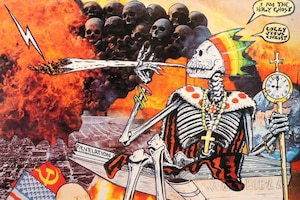
Soon, Perry began working with guitarist Mark Downie, whose Dub Factory was a mixed bunch, featuring white British, Anglo-Jamaican and Anglo-Indian players that became Perry’s new Upsetters. Working at Thameside studios in southeast London, they cut BATTLE OF ARMAGIDEON (MILLIONAIRE LIQUIDATOR) for Trojan, an album that contained several new classics, such as the autobiographical “Introducing Myself” and “I Am a Madman,” both of which would be mainstays of his live sets for decades to come. Even though the poorly executed faux-funk of “Sexy Lady” was somewhat regrettable, the album is a fine work, centring on Perry’s double-tracked vocals, which makes it sound like he’s having a conversation with himself.
Time Boom was easily the best thing he’d recorded since the Black Ark’s demise.
Even better was TIME BOOM X DE DEVIL DEAD, the first album he recorded with inventive English producer Adrian Sherwood. Sherwood’s multi-ethnic pool of musicians mixed the core of the Roots Radics with various London-based session players, yielding a sound based in reggae, yet thoroughly different, incorporating shades of rock, funk, and jazz. Perry felt thoroughly comfortable with this kind of backing, making Time Boom easily the best thing he’d recorded since the Black Ark’s demise. “Jungle” and “De Devil Dead” also became mainstays of his live set for decades to come, and songs like “SDI,” which critiqued Ronald Reagan’s strike defence initiative, showed that he’d lost none of his political awareness.
Perry then travelled to New York to record SATAN KICKED THE BUCKET for Lloyd “Bullwackie” Barnes. It was another strong album (if not as memorable as Time Boom), the largely digital rhythms leaning closer to the contemporary Jamaican dancehall sound, but given a greater depth through the creative constructions of the Wackies crew. Along with a new “Keep On Moving,” recorded with Max Romeo, Perry mutated Marley’s “It’s Alright,” and turned the Techniques’ “Love Is Not a Gamble” into “One Horse Race,” but the strongest songs were pure originals like the title track (another snipe at Blackwell), the eerie “Sweet Dreams,” and freaky “Bat Bat,” in which Perry announced he would cover Margaret Thatcher with fuel from his rectum. The album’s dub companion, which surfaced in 1990, was pleasant enough, but was mixed without Perry’s input.
Ariwa’s MYSTIC WARRIOR was an unexpected issue in 1989. It was an album Perry voiced with Mad Professor five years earlier. Though there were several gratuitous adaptations of Marley songs, the most effective numbers were originals cut over eerie Ariwa rhythms, on which Perry unleashed the anguish of his tortured soul. On “25 Years Ago,” he claims to have eaten his own shit, and burned down the Black Ark for getting neither proper payment nor artistic recognition for his work; “Pirates (Black Plastic)” expressed a similar frustration (again, the obligatory dub companion LP was mixed by Mad Professor without Perry’s involvement).
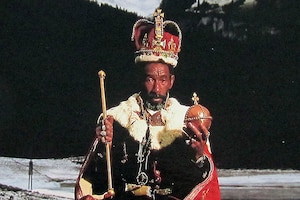
Since Perry had been aiming so many barbs at Blackwell’s head, the fact that FROM THE SECRET LABORATORY, his second collaborative work with Adrian Sherwood, was issued by Island in 1990, was a real surprise. It was a thoroughly modern album, its core rhythms built at Jamaica’s Mixing Lab with the Roots Radics (along with others cut in England with various players, such as Tackhead guitarist Skip McDonald), lending a varied, if somewhat unbalanced, feeling to the set; budgetary constraints limited Perry’s voicing sessions too. But even if it is not as compelling or organic as Time Boom, the album still works well. The title track was probably the closest thing to a Lee Perry dancehall record, and it became another live mainstay, as did “Inspector Gadget”; “You Thought I Was Dead” had Perry castigating Jamaican politicians and others he felt had shown him disrespect.
A lot of surprising and dubious material surfaced in this era.
The Swiss release SPIRITUAL HEALING, co-produced by Higi Heilinger and released on Black Cat, is certainly not required listening. Mixing trashy new tracks cut with Swiss rock musicians, such as the nonsensical “Babush” and “Sexy Boss” (the latter recounting his relationship with new muse Mireille Campbell), other tracks mutated Black Ark classics, such as Augustus Pablo’s “Vibrate On,” here re-used for “Sex Vibration,” with “Lama Lava” downgraded to dance number, “Come On and Dance.”
A lot of surprising and dubious material surfaced in this era: MESSAGE FROM YARD, a rag-tag bunch of unfinished outtakes from Satan Kicked the Bucket, issued in small quantities by the Rohit label, probably should not have been released, since it was so obviously incomplete. The album has some dry humour, as revealed in the honest “Money Me a Deal With” (a good summary of the motivation behind the disc), but the bulk is best described as filler, marked by haste and sloppiness. A follow-up release on Tassa, The Dub Messenger, made further use of the same lousy outtakes, again without Perry’s involvement.
The mini-album FULL EXPERIENCE is far better, salvaged from 1977 Black Ark sessions recorded with Aura Lewis and the Full Experience, playful tracks with great musicianship and three-part female harmonies.
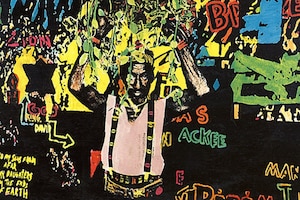
Back in Jamaica in 1992, Lee Perry unexpectedly voiced new albums for Heartbeat that evidenced renewed energy, following his link with Mireille. LORD GOD MUZICK (AKA The Reggae Emperor), produced by his old spar Niney, was a dancehall-styled digital affair. Tracks like the driving “Free Us,” the vitriolic “Hot Shit” and a re-cut of Marley’s “Who Colt the Game” (now aimed at Bunny Lee) worked well, though other tracks felt mediocre, and using the original 1968 “I Am the Upsetter” rhythm as a backing track for mumbled nonsense was definitely a mistake. Nevertheless, for fans of Perry’s post-Ark Perry works, the album retains considerable appeal.
Surfacing in 1992, THE UPSETTER AND THE BEAT was actually voiced by Perry in the late ’80s, at Studio One’s New York and Jamaican premises, using Coxsone Dodd’s vintage rhythms. Unfortunately, the result was somewhat disorienting, with Perry’s off-key ad-libbing seeming at odds with rhythms such as the Wailing Souls’ “Back Out With It,” now transformed to “Don’t Blame the Baldhead,” and “Mr. Fire Coal Man,” here demoted to the stuttering “Twiddle with Me.” Perry sounded less obtrusive on Dodd’s newer digital rhythms, as heard on “Big Apple Coconut” and “There Is a Place for Us.” Not essential by any stretch, but it certainly has its moments.
Confusingly, the 1994 release SMOKIN’ was actually recorded during Perry’s 1981 New York sojourn. It is an excessive, stream-of-consciousness journey through Perry’s psyche, produced by Munchie Jackson, who’d been involved in Little Roy’s Tafari label, as well as early Bullwackies releases. Largely ad-libbed metaphysical diatribes and rambling declamatory rants, the material was firmly in Pipecock Jackxon mode, with “Hi-Jack,” “Atlas Road Map,” “Cockroach Motel” and “Calamooch” sounding upbeat and optimistic, contrasting with the dark mood of obeah tune, “Seven.”
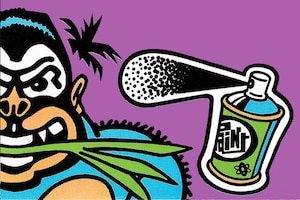
Perry’s subsequent reconnection with Mad Professor in late 1994 resulted in a slew of new Ariwa studio albums that would take him into the new millennium. Opening salvo SUPER APE INNA JUNGLE was unfortunately one of the weakest, being barely listenable jungle and techno-dub remixes of outtakes from the more cohesive BLACK ARK EXPERRYMENTS, one of the strongest Perry albums of the period, voiced on some thoroughly organic Robotics rhythms. Despite being put together over the course of a weekend, the latter had strong songs such as the autobiographical “Open Door” and the censorious “Heads of Government,” both of which became regular fixtures of his live concerts (again, the album’s dub companion set was put together largely without Perry’s involvement).
WHO PUT THE VOODOO ‘PON REGGAE continued in the same vein, though this time the rhythms behind him were largely electronic. Another stream of words from the Upsetter, striving to express the minutiae of his particular world vision, Perry saluted his newfound Japanese popularity on “Megaton Bomb,” warned romantic rivals on “Don’t Touch My Shadow,” and admitted some of his bad habits on “Messy Apartment.” Unfortunately, much of the rambling material lacked focus, though it still retains a certain appeal (and as usual, the dub companion album was put together without his involvement).
In the midst of the Mad Professor collaborations, 1997’s TECHNOMAJIKAL, issued by ROIR in the USA, was the result of an ill-fated project brokered by Swiss group X-Perry-mental, whose keyboardist, Jeannot Steck, had previously backed Perry on select European performances. Perry voiced several techno tracks with the group in 1993, which they later handed over to Deiter Meier of Yello, who got producer Martin Kloiber to restructure it, adding sitar, flute and didgeridoo overdubs. However, trying to shoehorn Lee Perry into various house music formats garnered very poor results, and alternate mixes of tracks like “Maxi Merlin” and “LSD-LSP” merely emphasized that not much was on offer.
Of the remaining collaborations with Mad Professor, 1998’s DUBFIRE was a little disappointing, since it was entirely comprised of re-cuts of Perry’s back catalogue, which merely highlighted how great the originals were. Though it has its moments, as in the melancholic take of Junior Byles’ “The Long Way,” attempts at revamping Marley’s “Soul Rebel,” “Duppy Conqueror” and “Satisfy My Soul” fell pretty flat. There were moments of self-parody too, as with the baby imitation on the title track, and the new take of “Doctor Dick” which was excessively filthy (once again, the dub companion was put together without Perry’s involvement).

TECHNO PARTY, Perry’s first release of the new millennium, fared much better. Blending the old and the new, his unhinged rants and chants were tastefully fused to rhythms with trance, jungle and trip-hop influences, some of which were based on classic reggae. The title track is a Goanesque-trance update of “Punky Reggae Party,” while “Crooks in the Business” is booming hip hop that relates Perry’s distaste for music industry thieves; “Come in Dready” is a deep house ramble built around a James Brown sample, while the vengeful “Daddy Puff” threw insults at stars of another genres (as usual, Perry was largely absent for the dub companion album).
The following year, Trojan managed to resurrect an album Perry began recording for them in 1987-88, which was not entirely completed. Issued as ON THE WIRE, it had a marvellous extended reworking of “Exodus,” and a baffling, multi-voice opus called “For Whom the Bell Tolls,” but the backing vocals of “Buru Funky” clashed with his lead, and alternate versions of the On-U Sound tracks “Jungle” and “Train to Doomsville” were out of place.
Jamaican E.T. managed to bag a Grammy for the “best reggae” album, but the award seemed to have been issued more as a “lifetime achievement” equivalent.
Somehow, Trojan’s 2002 release JAMAICAN E.T. managed to bag a Grammy for the “best reggae” album, but the award seemed to have been issued more as a “lifetime achievement” equivalent, rather than reflecting the album’s reggae popularity. Co-produced by Roger Lomas, who had worked with noteworthy 2 Tone acts, the album’s funk-rock orientation was driven by former members of the Style Council and Flesh For Lulu, but the music feels incidental beside layer upon layer of impenetrable Perry vocals. There’s a disjointed re-cut of the Staples Singers’ “I’ll Take You There,” funky numbers “Holyness, Righteousness, Light,” “Love Sunshine, Blue Sky,” and the misleadingly titled “Hip Hop Reggae”; perhaps the best numbers are “Telepathic Jah a Rize” and “Evil Brain Rejector,” both oddly appealing soups of Perry platitudes.
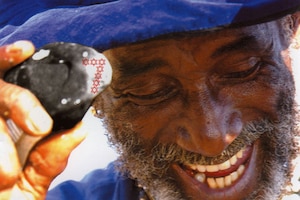
Although two and three star reviews were the norm for Jamaican E.T., the overly slick follow-up, ALIEN STARMAN, was a commercial failure, typically meriting one-star reviews. Most of the disc sounded like half-baked fodder, or perhaps unused outtakes from the previous album; an attempt at the Temptations’ “My Girl” was terribly off-key, though a bouncy re-cut of “Duppy Conqueror” fared marginally better. One reviewer described the album as “a nadir of pointlessness,” and another proclaimed it “entirely missable.”
In 2004, Perry teamed up with a group of Swiss musicians, the White Belly Rats, after being approached by engineer/keyboardist Thomas Lautenbacher, AKA DJ Startrek; drummer Daniel Spahni, who is part of Dennis Bovell’s Dub Band, was also on board. The resultant PANIC IN BABYLON was musically stronger than most of what had surfaced after Who Put the Voodoo Pon Reggae, helped by tasteful mixing and a live horn section, even if Perry sang off-key throughout. The high points include the anti-Devil “Purity Rock,” the swirling synths of “Voodoo” and the vibrant title track, a mutation of “I Am the Upsetter” with a hot horn solo. Unfortunately, “Are You Coming Home” is unconvincing sleaze, and three live bonus tracks were somewhat gratuitous.
Three years later, THE END OF AN AMERICAN DREAM, issued by US independent Megawave, was the first of a trilogy recorded with John Saxon, AKA Steve Marshall, a guitarist and singer that had backed Perry on stage in the 1980s, and recorded the abstract EP AD Vendetta. As was increasingly the case, the album was seemingly driven by whatever came into Perry’s head as the tape was rolling, and the lack of cohesion was heightened by its random musicality, taking in funk, hip hop, techno and rock, with just a smattering of reggae. “I Am New Yorker” employed scratch-‘n’-mix sampling, and “Disarm” had funky guitar picking and a choppy organ, while “One God Rain” and “Teddy Bear” rode electro beats; the title track was probably the most relevant, Perry speaking in multiple voices of the present decline of the USA.
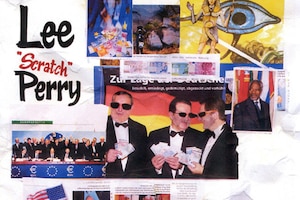
Easily the most important album to surface in this era was THE MIGHTY UPSETTER, the third collaborative work with Adrian Sherwood. The album deserves masterpiece status, being the most impressive Lee Perry release since Time Boom. Jamaicans Paul “Jazwad” Yebuah and Steven “Lenky” Marsden helped inject a dancehall element, with Dennis Bovell and Skip McDonald adding subtle cosmopolitan touches. The album managed to revisit Perry’s past and also propels him into the future.
The Mighty Upsetter deserves masterpiece status, being the most impressive Lee Perry release since Time Boom.
“International Broadcaster” updates “Bucky Skank” in hip hop mode with Roots Manuva; the anti-crack “Rockhead” is a fearsomely augmented “Africa’s Blood,” while “Kilimanjaro” references “Station Underground News” on a horn-driven cut of the Silvertones’ “Rejoice”; “Political Confusion” has Perry proclaiming that Tony Blair is a liar who will pay for his sins, and George W. Bush will lose his soul for terrible misdeeds. All in all, a truly exceptional result that proved he could still record albums that matter. The dub companion album, Dubsetter, is equally essential (though the dubstep reworkings on Nu Sound & Version, are less compelling).
From an all-time high to an all-time low: Narnack’s REPENTANCE was the result of an ill-fated chance encounter with Andrew WK. This super-hyped album really missed the mark, perhaps because the music seemed in opposition to itself, with noise rock drummer Brian Chippendale and bassist Josh Werner of Matishyahu’s band not necessarily in accord with each other. Regrettable numbers like “Baby Sucker” and “Crazy Pimp” are objectionable in both content and form; rape jokes and the gratuitous use of porn samples ultimately tipped the set closer to the reject zone, though “Heart Doctor” and the devotional “God Save His King” are pleasant enough.
SCRATCH CAME, SCRATCH SAW, SCRATCH CONQUERED also surfaced at around the same time, the sophomore set cut with John Saxon. The appearance of guest contributors Keith Richards and George Clinton was a major sonic coup, with Richards’ bluesy guitar giving “Heavy Voodoo” a major lift, though Clinton’s contribution to the vengeful hip hop of “Headz Gonna Roll” had less impact. And although this album is significantly more focussed than The End of an American Dream, it still probably pointed in too many different directions at once.
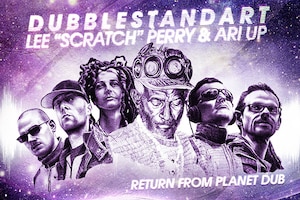
2009 saw the release of RETURN FROM PLANET DUB, a collaboration with Austrian dub duo, Dubblestandart, which also had ex-Slits lead Ari Up on select tracks. It is a cavernous excursion into deep dub, chilling house and dubstep, with Perry dispensing his usual wisdom, such as the lowness of Hell and extreme heights of Heaven on “Deadly Funny.” He revisits “Chase the Devil” and “Blackboard Jungle” as well, and “I Foo China” is reminiscent of his early On-U work. Watch out, however, for “Fungus Rock,” a repulsive track about VD.
REVELATION, the final instalment of the John Saxon trilogy, surfaced in 2010. As usual, it was all over the map, with “Holy Angels” drawing from old school dub, “Weatherman” and “Books of Moses” in blues mode, the latter thanks in part to Keith Richards’ percolating guitar licks; George Clinton is on “Scary Politicians,” but again, his presence doesn’t quite gel. Even less successful are “An Eye for an Eye”’s ill-fitting porno soundtracks and “Freaky Michael,” which takes a swipe at Michael Jackson.
The following year, RISE AGAIN found Perry collaborating with Bill Laswell, for an above-average set, placing Perry largely in the mode of Ethiopiques, thanks to the presence of Gigi Shibabaw on tracks like “Orthodox,” “Wake the Dead,” and “African Revolution.” Other songs, like “ET” and the rambling title track, have a spacey roots vibe, made more three-dimensional by the presence of other righteous guests, including Sly Dunbar, Josh Werner and Jahdan Blakkamore.

The 2012 collaboration with the Orb, THE ORBSERVER IN THE STAR HOUSE, issued by Cooking Vinyl in Britain, also worked well. Perry’s babbling stream of consciousness fits well over their fluidly spacey electronic backing, resulting in plenty of moments to savour: the minimalist rhythm of “Golden Clouds,” a reworking of the Orb’s “Little Golden Clouds,” has an optimistic, upbeat quality, as a double-tracked Perry communes with God; “Hold Me Upsetter” has a bossa-nova feel, and “Man in the Moon” is another charmer, with snippets of wisdom as the track slowly unfolds; it begins like Goa trance gone wrong, but soon drifts into reggae territory, as Perry proclaims himself a Swiss tycoon, at home on the moon. Re-working Junior Murvin’s “Police and Thieves” could have been a failure, but nearly works, since the Orb draw in an ancient 1960s Upsetters organ track, and a ghostly 1970s melodica. Thus, lots of fun for late-period Perry fans, and something that will appeal to Orbologists too. The gratuitous follow-up, MORE TALES FROM THE ORBSERVATORY, was probably assembled from leftovers, and isn’t helped by the presence of five instrumental tracks, but still has enjoyable moments, such as “No Ice Age” and “Making Love in Dub.”
French duo Easy Riddim Maker provide the backing for Humanicity, the latest offering from President Perry. It’s another album that reconfigures Perry’s reggae past in a modern rock setting, with “4th Dimension” revisiting “Blackboard Jungle” and “Jesus Perry” exploring the ethereal man’s “reggae reincarnation,” referencing gems of the past like “Vibrate On.” Just don’t play the unnecessarily X-rated “In the Bathroom” when young children are within earshot.
Navigating Perry’s retrospective compilations is another minefield, especially since there are many collections that bear his name and photograph, yet had nothing to do with him (including Guitar Boogie Dub, Hold of Death, Presenting Dub, A Serious Dub, Augustus Pablo Meets Lee Perry at the Black Ark, Lee Perry & The Upsetter Meet Scientist at Black Ark Studio, The Great Lee Perry King of Dub, Scientist Upset the Upsetter, and Lee Perry Meets the Mad Professor in Dub, to name but a few). For the genuine article, the first place to head is Arkology, Island’s superb triple-disc set of his Black Ark heyday. The Heart of the Ark and Megaton Dub series form Seven Leaves was prime Perry too, as are any of the retrospectives on Pressure Sounds, and the many box sets issued on Trojan.
To find out more about the dub innovator’s monumental career, check out David Katz’s authoritative biography, People Funny Boy: The Genius of Lee 'Scratch' Perry.
This feature is part of a week of articles guest curated by Stroboscopic Artefacts boss Lucy.
Says Lucy, “Lee Perry has been a pillar of my musical background since I was 13. The most interesting thing is the sense of dub, which is something that has been hugely influential in music in so many ways – most of which are completely invisible.
Another thing about Lee Perry is that he did it in a very uncompromising way at the beginning. The Black Ark Studios were putting out something that was unbelievably forward at the time. His equipment wasn’t hi-tech, but then he started using tape delays, reverbs and phasers in a very creative way. As instruments, literally. These kinds of things are a driving force for every day in the studio. Two of the main things that I use in the studio that never change are tape delay and a phaser. The exact same two that he was using. These things are hugely close to my sensibility and what I do in electronic music.
Lee ‘Scratch’ Perry was upsetting the normal paradigms, changing the values. Things that normally are in your face go in the background, things that normally are ambience go in your face. This kind of upsetting is something completely present in whatever I do, from my music production to the label output.”
To check out more of the features that Lucy picked out, check out his guest curator hub page.
Header image © Dan Wilton

